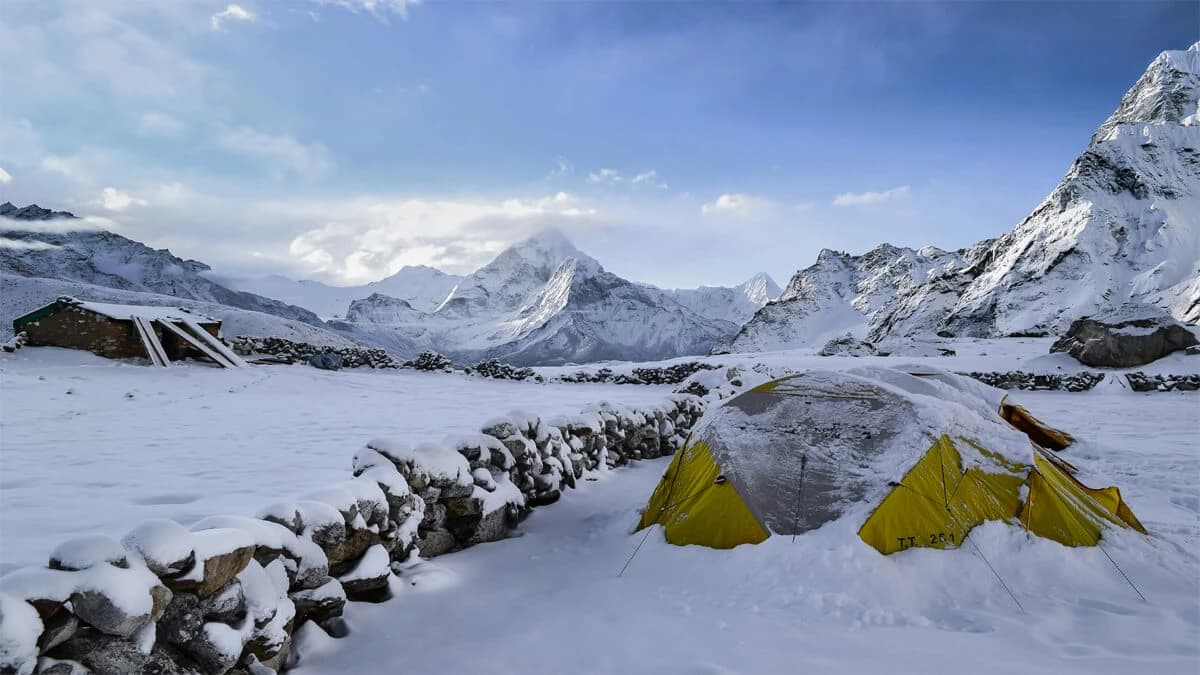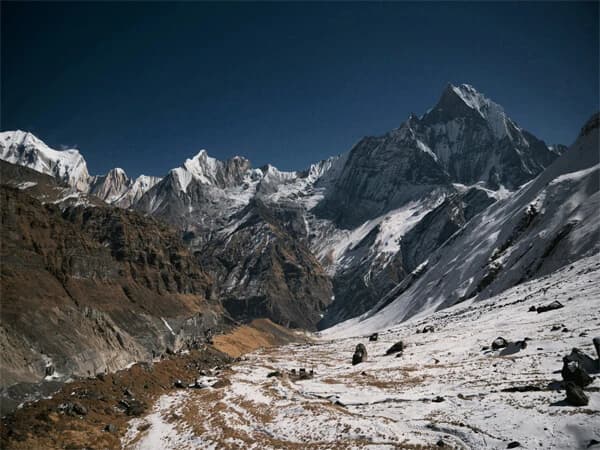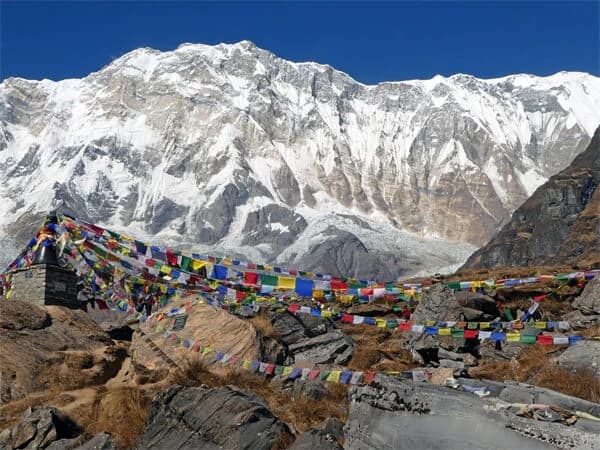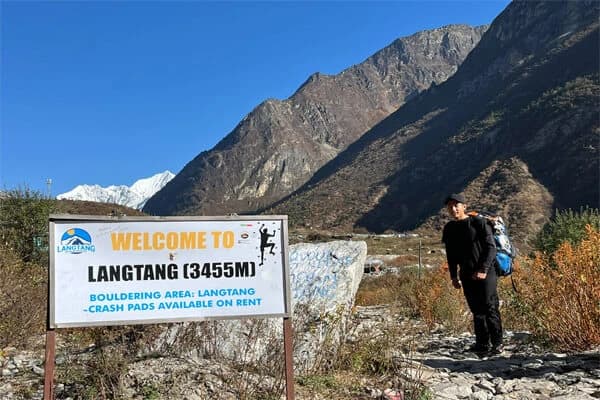Tent Peak Climbing cost typically ranges between USD 1,500 and $3,500, depending on services, group size, and season. The primary costs are climbing permits, guide and porter wages, meals, lodging, transportation, and necessary equipment. Additional expenses like as insurance, personal equipment, and tips should be addressed. Joining a planned package ensures safety and good logistics, making the climb less stressful and more fun. Tent Peak, also known as Tharpu Chuli Peak Climbing, is one of Nepal's most affordable trekking peaks, providing excellent Himalayan vistas and mountaineering experience at a moderate cost to travelers.
How Much Does Tent Peak Climbing Cost
Tent Peak Climbing, also known as Tharpu Chuli Peak Climbing, is one of Nepal's most famous trekking destinations, standing at 5,663 metres. It is a thrilling climb for novice and intermediate travelers who want to experience high-altitude Himalayan trekking without the significant technical demands of larger peaks such as Mera peak or Island Peak. The ascent includes gorgeous pathways through lush woods, traditional Sherpa villages, and breathtaking vistas of the Annapurna and Dhaulagiri ranges. While physically hard, Tent Peak is also called Tharpu Peak Climbing is considered a more manageable peak, making it a popular choice for individuals wishing to gain climbing expertise before attempting higher summits.
Understanding the Tent Peak climbing cost is critical to planning a successful excursion. Expenses include climbing permits, guide and porter fees, transportation to Nayapul or the trailhead, lodging, meals, equipment, and insurance. Costs can vary depending on whether you join a guided package, employ independent support, or rent rather than buy goods.
This blog seeks to provide a complete overview of Tent Peak climbing costs, assisting potential climbers with their financial and logistical planning. It provides realistic information about all expenses, assuring a safe, pleasurable, and well-organized climbing trip in Nepal's magnificent Himalayas.
Tent Peak Permit Fees
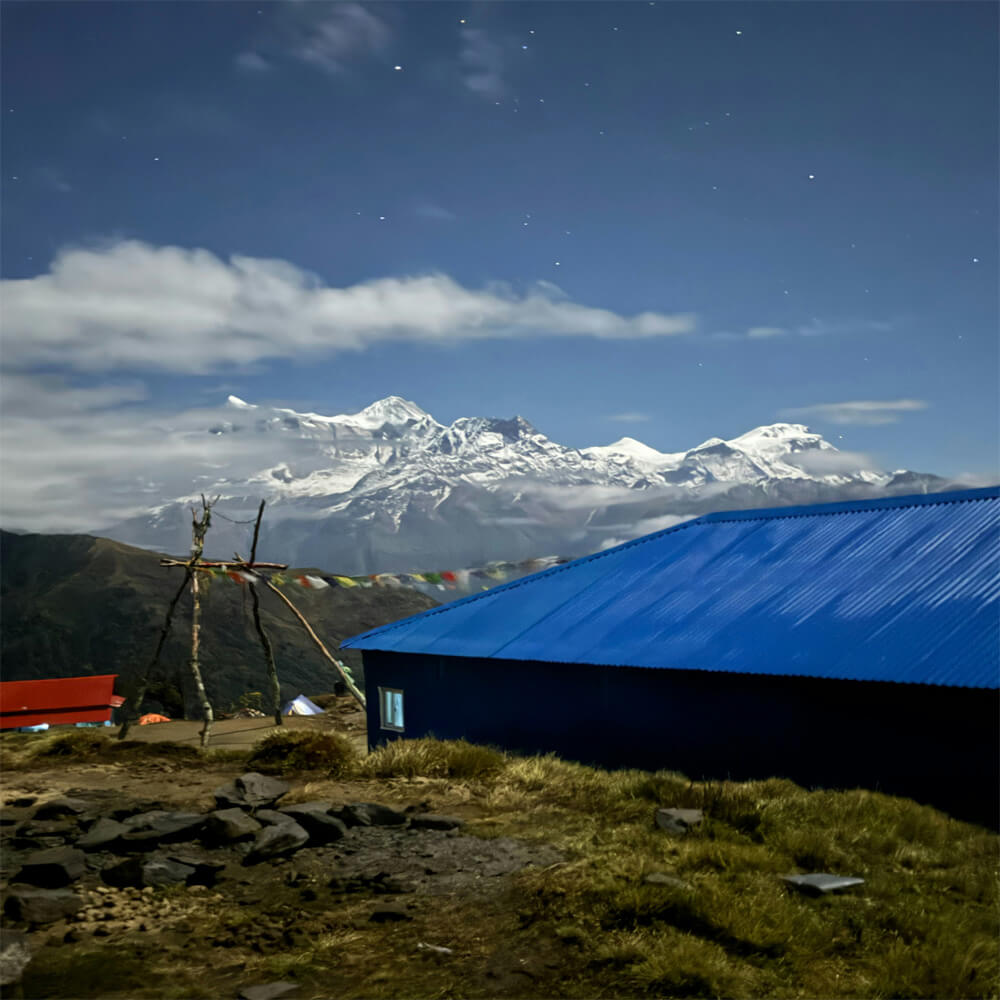
Understanding Tent Peak permit fees is critical to organizing a successful climbing excursion. Tent Peak (also known as Tharpu Chuli) is a renowned trekking peak in Nepal's Annapurna area. Tent Peak is designated as a trekking peak by the Nepal Mountaineering Association (NMA), therefore climbing it requires specific permits, and the charges vary depending on nationality, peak season, and whether you climb individually or with a certified agency.
Climbers must get a Tent Peak Climbing Permit from the Nepal Mountaineering Association. Foreign climbers typically pay a permission cost of $250-300 per person. The charge offers climbers legal permission to ascend the peak while also covering the administrative costs of governing trekking peaks in Nepal. If you are a Nepali citizen, the permission charge is normally between NPR 10,000 and 15,000. The permission must be sought for in advance and is frequently handled by trekking agencies, who ensure that all documents and approvals are completed efficiently.
In addition to the climbing permit, further permits may be required depending on the route. Tent Peak is located within the Annapurna Conservation Area, so trekkers must additionally get an Annapurna Conservation Area Permit (ACAP). Foreign nationals often pay $30-50 for this permit, which covers conservation fees as well as access to trekking trails, teahouses, and environmental management initiatives. The Trekkers' Information Management System (TIMS) card, which is necessary for most trekking routes in Nepal and costs between $20 and $30, helps track trekkers for safety and regulatory purposes.
Tent Peak Climbing Cost in Nepal
Tent Peak climbing costs in Nepal include not only permit fees, but also guide and porter assistance, equipment rental, lodging, food, and transport. Hiring a licensed guide is strongly advised, especially for safety during the tough stages of the climb. Guide prices run from $25 to $40 per day, while porters cost between $25 and $25 per day. Crampons, harnesses, and ice axes are available for rent in Kathmandu or at local trailheads for $100-$150 for the duration of the trek.
Ground transportation to the trailhead incur additional fees, as do meals and accommodations in teahouses along the trek, which normally cost $20-$30 per day. Budget for emergency insurance, high-altitude rescue coverage, and any other miscellaneous expenses like as tips and communications.
Overall, climbing Tent Peak with the necessary permits provides legal and safe access while also respecting Nepal's conservation and trekking rules. Budgeting for both Tent Peak climbing permit fees and other expedition costs is crucial for a smooth and pleasurable experience, and partnering with our reliable operator, Nepal Trekking Routes can make the process easier and guarantee that all permits are secured ahead of time.
Guide and Porter Costs for Tent Peak Climb
Climbing Tent Peak (Tharpu Chuli) is a simple but rewarding Himalayan experience, and the expense of hiring guides and porters is a critical component of your budget. Professional support provides safety, effective logistics, and a more enjoyable trekking experience, especially given the high altitude terrain and steep areas near the peak. Here is a full summary of costs and concerns.
Tent Peak Guided Tour Price
Even experienced trekkers should hire a qualified guide to visit Tent Peak. A skilled guide oversees correct acclimatization, route navigation, and technical assistance during glacier crossings or difficult ascents. The usual cost of a Tent Peak guided tour is $30 to $50 per day, depending on the guide's experience, the trekking season, and whether it is a solo or group tour. Guide rates for a conventional 12- to 14-day itinerary from Nayapul to the summit and back range between $360 and $700.
Professional guides also manage permits, communicate with porters, and offer advice on altitude sickness prophylaxis. Many trekking packages include guide costs, permits, housing, and food, giving climbers better value and less worry.
Tharpu Chuli Climb Cost Breakdown
Porters are another important tool for transporting luggage, climbing equipment, and camping supplies. Hiring one porter costs between $20 and $30 per day, which includes food, lodging, and insurance. For a two-person team sharing one porter, the total porter cost for a 12-day excursion would be $240-$360.
Less experienced climbers may require additional support, such as assistant guides or climbing sherpas, particularly on summit day. This can add an additional $15-$25 per day per person to the total cost.
When determining the overall climbing cost, include guide and porter expenses as well as shared group arrangements. For a small group of 2-4 climbers with one guide and one porter, the total staff support cost for the full trip ranges between $600 and $1,000.
Investing in professional assistance not only improves safety but also increases the likelihood of a successful summit, making the climb more fun and stress-free.
Transportation Costs for Tent Peak Climb
Transportation is an important consideration when planning a Tent Peak (Tharpu Chuli) climb because it has a direct impact on both the budget and the overall logistics of the expedition. Costs vary according to mode of transportation, route, and starting point. The following is a full summary of the travel and logistics expenditures for climbing Tent Peak.
Tent Peak Travel and Logistics Costs
Most climbers start their journeys in Kathmandu, Nepal's capital, where foreign aircraft arrive. The most typical route from Kathmandu to Tent Peak's base camp is by Pokhara, followed by a drive to Nayapul or Dhampus, the beginning location for the trip.
Domestic flights from Kathmandu to Pokhara cost between $90-$106 one-way, while tourist buses cost between $10 and $15. While flights save time, they are more expensive.
Pokhara to Nayapul/Dhampus: Private taxis or local buses cost between $5 and $25 per passenger, depending on comfort and negotiating. Depending on the itinerary, trekkers start their journey to Pisang or Hinku Base Camps from the trailhead. Daily trekking and hotel costs are distinct from transportation, but they are impacted by the distance from Kathmandu.
Additional logistics costs may include porter fees for luggage transport, which vary from $15 to $25 per day, and guide transportation, which normally costs $20 to $30 per day to cover meals and movement. Porters carrying heavier personal things lessen fatigue and make the climb go more smoothly.
Annapurna Tent Peak Climb Cost
Tent Peak is located in the Annapurna region, and climbers frequently combine their ascent with trekking in Annapurna Base Camp or Ghorepani-Poon Hill sectors. The cost of transportation in this region varies.
Road transportation from Pokhara to trailheads (private jeeps or taxis) costs between $25 and $50, depending on distance and vehicle type. Local trekking permits (TIMS, ACAP) may require travelers to visit regional offices, resulting in minimal transportation fees (~$5-10).
The total cost of transportation and logistics for a Tent Peak climb can range from $150 to $300, not including flights to Nepal. Climbers' costs vary depending on whether they use private automobiles or municipal buses, and whether they hire porters.
Planning carefully for transportation ensures a seamless start to the excursion, allows for better budgeting, and minimizes unneeded weariness before embarking on high-altitude walking and climbing.
Tent Peak Gear & Accommodation Cost
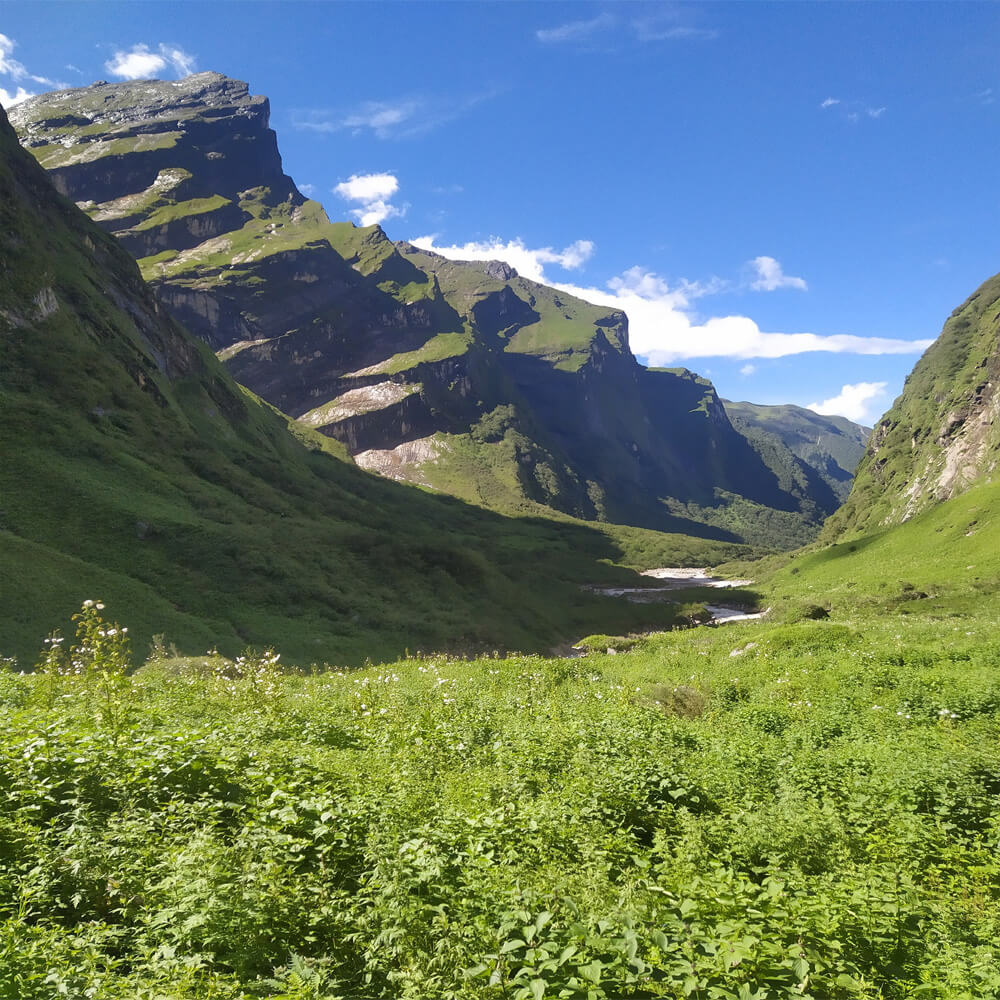
Teahouses at villages along the Tent Peak route, including Ghorepani, Chhomrong, Dobhan, and Annapurna Base Camp, serve as the primary means of accommodation. Teahouse prices vary based on location and season. Lower-altitude communities such as Tikhedhunga and Ghorepani offer lodgings ranging from $5 to $15 per night, which often include communal beds and rudimentary amenities. As you travel to higher elevations around base camp, rooms may cost $10 to $25 per night, with minimal heating and bare bedding.
Altitude and accessibility effect food prices during the trek. Daily meals in teahouses often cost $15-$25 and include staples like as dal bhat, noodles, soups, and the occasional meat dish. Hot drinks such as tea, coffee, and hot chocolate add $1-$3 each cup, which can mount up over several days. Staying well-nourished is critical for energy and acclimatization, so climbers should budget for three meals each day, including snacks.
Climbers carrying personal climbing gear should consider the cost of renting or purchasing items like crampons, ice axes, harnesses, and helmets. Renting gear in Kathmandu or Pokhara normally costs $100-$200 for the entire adventure, however buying brand-new kit might cost $300-$500, depending on quality and brand.
Tent Peak Expedition Price
Tent Peak expedition cost includes hotel, meals, permits, guide and porter costs, and transportation. A typical guided excursion spanning 10-12 days costs $1,200 to $2,500 per person. This package typically includes a licensed climbing guide, a luggage porter, all lodging and food throughout the expedition, and climbing permits.
Independent trekkers may spend less, but they must handle practicalities like as hiring teahouses, planning meals, and transporting gear. Local transportation or transfers ranging from $50 to $100. Insurance, particularly high-altitude rescue coverage, is also required and can cost between $50 and $100.
While Tent Peak is considered a trekking peak accessible to climbers with moderate experience, the combination of accommodation, food, and expedition logistics makes planning ahead essential.
Cost to Climb Tent Peak
Tent Peak, also known as Tharpu Chuli, demands both trekking and mountaineering equipment. Because this peak is located in the Annapurna Sanctuary, trek will require equipment suitable for both routine trekking and high-altitude climbing. The cost varies based on whether you rent or purchase the equipment.
- Essential Climbing Equipment: Crampons, ice axes, helmets, harnesses, ropes, and carabiners are required. Renting this gear in Kathmandu or Pokhara usually costs USD 1-2 per item per day. If you buy new gear, expect to spend between USD 300 and $500 for a whole set.
- Clothing and Footwear: Layered clothing is required, including a down jacket, thermals, a windproof shell, and climbing boots.
- Camping Equipment: Although many expeditions rely on teahouse accommodations for the most of the trek, camping is required in high sites. Tents, sleeping bags, and mats are available for rent for roughly USD 5-10 per item per day.
- Other Essentials: Sunglasses, gloves, headlamps, and trekking poles cost an additional USD 100-150 if purchased.
Overall, Tent Peak gear and equipment costs between USD 200-500 to rent, and USD 800-1,200 to buy new.
Cheapest Way to Climb Tent Peak
The most affordable method to climb Tent Peak is to rent gear locally and join a group adventure. Here's how to save money:
- Rent Instead of Buy: Almost all climbing equipment is available for rental in Kathmandu or Pokhara. This significantly reduces prices, particularly for equipment like as climbing boots, ropes, and tents, which are costly to purchase. Renting instead of buying can save you $400-600.
- Join a Group Climb: Booking a guided group trip helps to cover the costs of guides, porters, and logistics. Instead of paying the entire guide charge, you split the cost with others, saving 20-30% per participant.
- Teahouse + Camping Combo: Stay in inexpensive teahouses along the Annapurna Sanctuary route, and only camp at higher elevations. This hybrid design eliminates the need for full camping logistics during the route.
- Shorter Tent Peak Climbing Itinerary: Choosing a shorter, more focused climb over prolonged trekking packages can also help you save money overall. Many climbers avoid unnecessary detours by trekking directly to Annapurna Base Camp.
- Local Agencies: Booking with a local Nepalese agency is often less expensive than booking through an international operator since you save middlemen fees.
With these strategies, a budget climber can accomplish Tent Peak climbing for roughly USD 1,500-2,500, as opposed to USD 3,000+ for standard packages and USD 4,000+ for luxury climbs.
Tent Peak Cost per Person
Climbing Tent Peak (Tharpu Chuli) is frequently regarded as one of the most economical Himalayan climbing excursions when compared to larger peaks such as Island Peak or Mera Peak. However, the cost per person varies greatly based on the length of the trip, the services provided, and whether you join a package or create your own.
A guided excursion lasting 16-20 days typically costs between USD 1,500 and USD 3,500 per person. This often includes permits, guide services, porters, meals, lodging, and basic climbing equipment support. The price includes logistics like as transportation from Kathmandu to Pokhara and into the Annapurna region.
If you want a more comfortable or luxurious climbing experience, with better accommodations, personal porters, high-quality camping gear, and possibly a helicopter return, the cost can reach USD 4,000-5,000 per person.
Another aspect determining cost is whether you rent or purchase equipment. Renting locally in Kathmandu or Pokhara is less expensive, but if you buy your own mountaineering boots, down jacket, and technical gear, you may pay an additional USD 500-1,000 up advance. Travel insurance with high-altitude coverage costs an additional USD 150-300, depending on the policy.
In short, for an average climber joining a respectable package, plan to spend at least USD 2,500-3,000 per person on a safe and well-organized Tent Peak climb.
Group vs Solo Tent Peak Cost
One of the most significant expense variables in climbing Tent Peak is whether you go alone or with a group.
- Group Climb: Joining a group greatly lowers the per-person cost. When multiple climbers share the logistics permits, guide pay, porter prices, and camping equipment expenses are divided. For example, a group of 4-6 climbers may each spend between USD 1,500 and 2,400, rather than USD 3,000 or more. Many local operators provide discounts for bigger groups, making group outings the most cost-effective alternative.
- Solo Climb: If you decide to climb Tent Peak solo with your own guide and porter, the fees will undoubtedly rise. You are fully responsible for the guide's and porter's daily salary (USD 30-40 and USD 20-25, respectively), as well as their insurance, food, and lodging. This means that a solo climber may pay closer to USD 3,500-4,000 for the same adventure that a group climber would pay USD 2,200-2,500. While solo climbing provides greater privacy, flexibility, and individualized support, it is significantly more expensive.
- Hidden Costs in Both Options: Climbers, whether single or with a group, should budget for additional personal expenses such as hot showers (USD 3-5), Wi-Fi (USD 2-5), battery charging (USD 1-3 per hour), tips (USD 100-200 total), and trail food. These items can add additional $150-300 to the total cost.
Miscellaneous Costs
When preparing a budget for Tent Peak (Tharpu Chuli), climbers tend to focus solely on the major expenses, such as permits, guides, food, and transportation. However, the minor, often-overlooked costs can pile up quickly. These are the miscellaneous expenses, and they affect the entire trip budget. Two important considerations here are how much you are willing to spend (budget style) and the season in which you climb.
Tent Peak Climbing Best Budget
If you want to keep costs down while still having a safe and memorable climb, you might devise a budget-friendly Tent Peak Climbing itinerary. The most crucial step is to prioritize your spending. For example, you should never skimp on a qualified climbing guide or enough insurance. These are non-negotiable for safety reasons.
Where you can save money is on equipment, lodging, and group sharing. Renting climbing gear in Kathmandu or Pokhara is much less expensive than purchasing brand new equipment. You should anticipate to pay roughly USD 100-200 for a complete set of rental items, versus USD 800-1,000 if purchased.
Teahouse accommodations are about USD 5-10 per night, with meals ranging from USD 5-7. Over the course of two to three weeks, staying in simple teahouses rather than luxurious lodges saves a significant amount. Joining a group trek rather than climbing solo also helps to distribute guide, porter, and transportation costs among multiple climbers. On average, a budget climber might spend USD 1,500–2,500 for the entire trip if they make smart choices.
Tent Peak Climbing Season Cost Variation
Another important aspect influencing overall cost is the season of travel. Costs often climb during peak seasons, which include spring (March-May) and autumn (September-November). This is due to increased demand; flights to Pokhara and local transit are busier, teahouses fill up rapidly, and guides are in high demand. Climbers might anticipate to pay a slight premium during certain seasons, with total expenditures ranging from USD 2,500 to $3,500 depending on package style.
Trekking and climbing can be less expensive during the off-seasons, which include winter (December-February) and monsoon (June-August). Flights and lodgings may provide discounts, and guide costs may be slightly adjustable as there are less climbers on the trails. However, the savings must be balanced against the increased danger of bad weather, challenging circumstances, or even delays caused by snowfall or rain. A winter climb may cut prices to roughly USD 1,500-2,300, but it necessitates additional equipment to withstand cold and snow.
Finally, the ideal method to balance expenses is to target shoulder months, such as late February, early March, or late November, when conditions are favorable but prices are not at their highest.
What you pay for Tent Peak climbing package
It is critical to understand how the whole package cost is organized when arranging your Tent Peak (Tharpu Chuli) experience. Most trekking and climbing firms in Nepal provide all-inclusive packages that include all aspects of the trip, though prices vary based on service level and duration.
A budget package normally costs between USD 1,500 and 2,300 per person. This covers modest teahouse accommodations for the journey, simple food, climbing permits, a licensed climbing guide, and porters. It is great for climbers who are content with basic amenities and seek a more affordable choice.
A mid-range package costs between USD 2,400 and 2,800 per person. You may expect tastier meals, more comfortable teahouses, professional climbing guides, and improved logistics. These packages frequently offer more consistent support during acclimatization and summit efforts, making the climb safer and smoother.
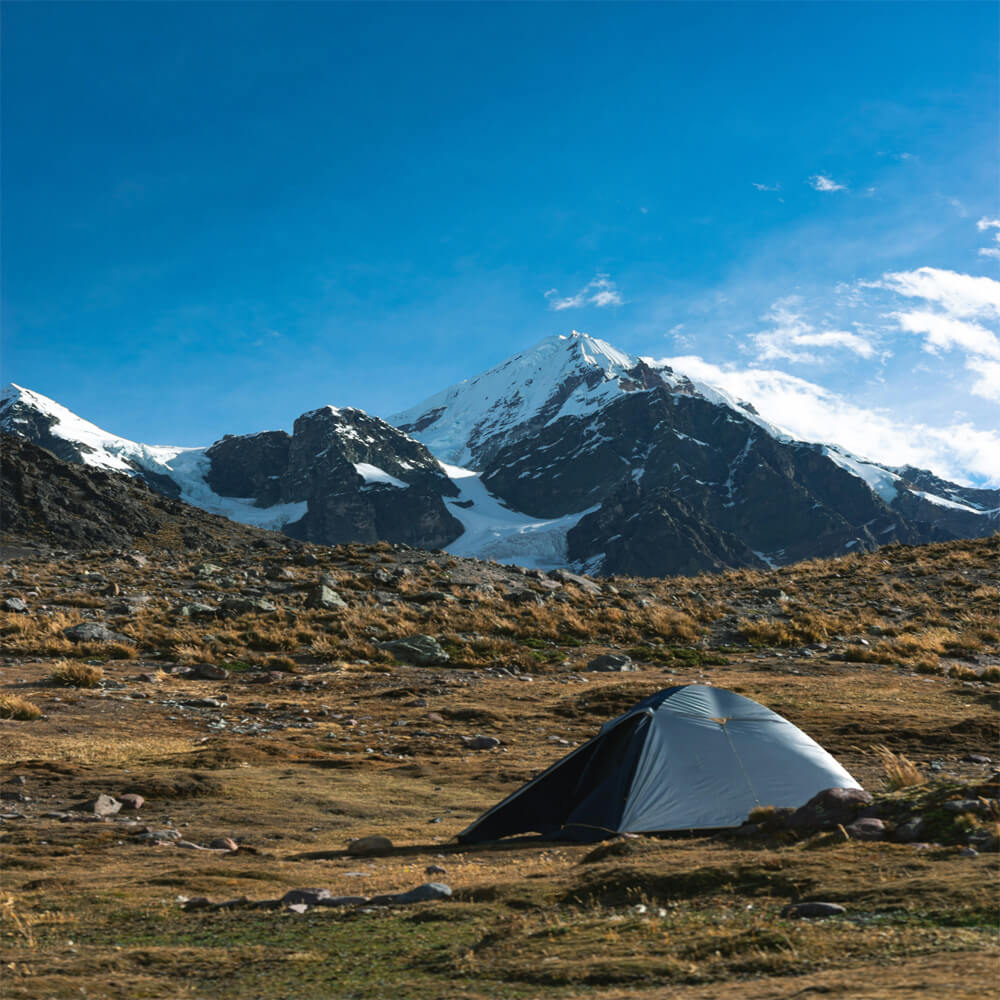
A premium package, which includes comfort and protection, costs USD 3,000-3,500 or more. These include improved lodging in Kathmandu and Pokhara, highly experienced Sherpa climbers, high-quality camping gear at base camp, and helicopter options for emergencies or time-saving transfers.
The important thing to remember is that the package fee includes permits, guide and porter services, meals, lodging, transportation, and crucial climbing gear assistance. Personal expenses like as international flights, insurance, gear purchase or rental, tips, and souvenirs are typically not included.
To summarize, the price of a Tent Peak climbing package is determined by whether you like simplicity, balance, or luxury. Regardless of your preference, investing in a reputable operator guarantees safety and a more gratifying trip in the heart of the Annapurna Himalayas.
Cost Comparison with Other Peak Climbing
When organizing a Himalayan climbing experience, pricing is frequently one of the first factors trekkers consider. Tent Peak (Tharpu Chuli) stands out as one among Nepal's more economical climbing peaks, with an average cost of USD 1,500-3,500. This makes it an appealing option for climbers seeking both trekking and climbing experience without exceeding their budget.
In comparison, Island Peak costs slightly more, typically between USD 2,500 and 4,000, because it is located in the Everest region, where logistics, permits, and lodging are more expensive. Similarly, Mera Peak, Nepal's highest trekking peak, often costs between USD 3,000 and $4,500 due to longer itineraries and the additional support required for high-altitude climbs.
Lobuche Peak, on the other hand, falls in the mid-range at USD 2,800-4,200, owing to its proximity to Everest Base Camp and the technical skills required for the climb. These fees include climbing permits, expert guides, equipment, food, transportation, and lodging.
Compared to these peaks, Tent Peak is a more affordable option because it is located in the Annapurna region, where permits and logistics are normally less expensive than in the Everest Region. The climb still offers a wonderful alpine experience, with panoramic views of Annapurna I, Machhapuchhre, and Hiunchuli.
Tent Peak is frequently regarded the greatest entry-level excursion for climbers looking for value. It strikes a compromise between affordability and adventure, whereas other peaks, such as Mera or Island, require a larger budget due to altitude, isolation, and longer itineraries. Ultimately, the decision is based on both budget and personal aspirations, but Tent Peak remains one of the most affordable ways to enjoy Himalayan climbing.
Tent Peak Climbing Cost FAQs
How much does Tent Peak climbing cost?
The cost of Tent Peak, also known as Tharpu Chuli, usually ranges between USD 1,500 to 3,500 depending on the service level, season, and group size.
What is included in the Tent Peak climbing package cost?
Most packages include trekking permits, peak climbing permits, guide and porter wages, accommodation, meals during the trek, and group climbing equipment.
Are international flights included in the Tent Peak climbing cost?
No, international flights to Nepal are not included. Climbers must arrange and pay for their flights separately.
What extra costs should I expect?
Additional costs may include personal climbing gear, travel insurance, tips for staff, hot showers, internet, and snacks or drinks during the trek.
Why do costs vary between trekking companies?
Prices differ based on service quality, safety measures, guide experience, and whether the package is standard, budget, or luxury. Choosing a reliable company ensures better organization and support during the climb.
Conclusion: Tent Peak Climbing Cost
Tent Peak, also known as Tharpu Chuli, provides one of the best Himalayan climbing experiences at a reasonable cost. While prices may vary depending on group size, services, and season, climbers should plan for permits, guides, porters, gear, lodging, meals, insurance, and emergency support. A Tent Peak adventure typically costs between USD 1,500 and $3,500, with luxury services costing more.
For most trekkers, joining a guided package is the safest and most practical option because it includes logistics and assistance. With appropriate planning, Tent Peak can be both financially doable and a pleasurable excursion. Our company, Nepal Trekking Routes, is strongly suggested for a safe and unforgettable climb.

